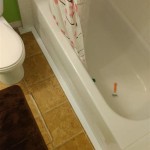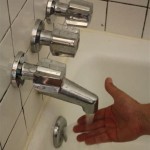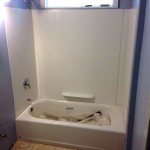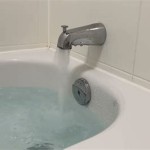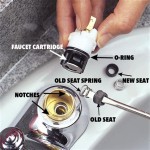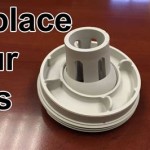```html
Why Is My Bathtub Not Draining Faster Than Normal Water?
A slow-draining bathtub is a common household plumbing issue that can range from a minor inconvenience to a significant source of frustration. While a slow drain may seem like a minor problem initially, it can lead to the accumulation of stagnant water, the breeding of bacteria, and potential damage to plumbing fixtures over time. Identifying the cause of the slow drain is crucial for implementing an effective solution. Several factors can contribute to this issue, from simple obstructions to more complex plumbing problems. Understanding these potential causes is the first step toward restoring the bathtub's drainage to its optimal performance.
This article examines the various reasons why a bathtub might not be draining water at a normal rate. It delves into the common culprits behind slow drains, exploring the types of blockages, potential plumbing issues, and preventive measures that can be taken to maintain a properly functioning bathtub drain.
Hair and Soap Scum Buildup
One of the most frequent causes of a slow-draining bathtub is the accumulation of hair and soap scum within the drainpipe. Hair, due to its fibrous nature, readily clings to the interior walls of the pipe and to any minor imperfections or protrusions present. Soap scum, composed of a mixture of soap residue, body oils, and minerals found in hard water, further exacerbates the problem by adhering to the hair and the pipe walls, creating a sticky and tenacious mass. This gradual buildup narrows the diameter of the drainpipe, restricting the flow of water and causing the bathtub to drain at a significantly reduced rate.
The impact of hair and soap scum buildup is often progressive. In the initial stages, the reduction in drainage speed may be subtle, easily overlooked or dismissed. However, as more hair and soap scum accumulate, the flow restriction becomes increasingly pronounced, leading to noticeably slower draining times and, eventually, to complete blockage. This can result in standing water in the bathtub after each use, creating an unsanitary environment and potentially fostering the growth of mold and mildew.
Addressing hair and soap scum buildup requires physical removal of the obstruction. This can be achieved through various methods, including the use of specialized drain cleaning tools such as drain snakes or augers. These tools are designed to be inserted into the drainpipe to break up and extract the accumulated debris. Chemical drain cleaners can also be used, but caution should be exercised as they can be corrosive and potentially damage plumbing fixtures if used improperly or excessively. Preventive measures, such as using hair catchers or strainers in the bathtub drain, can significantly reduce the amount of hair entering the drainpipe and minimize the likelihood of future blockages.
Partial or Complete Drainpipe Blockage
Beyond the common issue of hair and soap scum, a partial or complete blockage within the drainpipe can also be responsible for a slow-draining bathtub. This blockage can be caused by a variety of materials, including larger objects that accidentally fall into the drain, such as small toys, bottle caps, or pieces of jewelry. In addition, the accumulation of mineral deposits from hard water can gradually narrow the drainpipe over time, creating a partial blockage that restricts water flow.
Unlike hair and soap scum, which tend to accumulate gradually, a larger object lodging in the drainpipe can cause an immediate and significant reduction in drainage speed. The location of the blockage within the drainpipe also plays a crucial role in the severity of the problem. A blockage located closer to the bathtub drain opening will have a more immediate and noticeable impact on drainage speed compared to a blockage located further down the drainpipe.
Diagnosing a partial or complete drainpipe blockage often requires visual inspection of the drain opening and the use of tools to probe the drainpipe for obstructions. A plumber's snake or auger is commonly used to break up or dislodge the blockage. In some cases, if the blockage is located in an easily accessible section of the drainpipe, it may be possible to disassemble the pipe and manually remove the obstruction. However, for more complex blockages or blockages located in difficult-to-reach areas, professional plumbing assistance may be necessary.
Ventilation Issues in the Plumbing System
The plumbing system relies on proper ventilation to function correctly. Vent pipes, typically located on the roof of the house, allow air to enter the drainpipes, ensuring that water flows smoothly and efficiently. When the vent pipes become blocked or obstructed, it can create a vacuum within the drainpipes, hindering the flow of water and causing the bathtub to drain slowly. This is because the vacuum prevents the proper displacement of air as water flows through the drain, essentially creating a suction effect that slows down the drainage process.
Ventilation issues can arise from a variety of factors, including the accumulation of debris in the vent pipes, such as leaves, bird nests, or other foreign objects. In colder climates, ice buildup in the vent pipes can also cause a blockage, particularly during periods of freezing and thawing. Furthermore, improper plumbing installation or modifications can sometimes lead to inadequate ventilation, resulting in slow draining issues.
Diagnosing ventilation problems can be challenging, as the vent pipes are often located out of sight. Common indicators of a ventilation issue include gurgling sounds coming from the drainpipes when water is draining, or slow drainage in multiple fixtures throughout the house, not just the bathtub. To resolve ventilation problems, it is typically necessary to inspect the vent pipes for blockages and clear any obstructions. This may involve using a plumbing snake or auger to remove debris from the vent pipes. In cases of ice buildup, applying warm water to the vent pipes may help to melt the ice and restore proper ventilation. However, due to the height and location of the vent pipes, this task is often best left to a qualified plumbing professional.
Problems with the Bathtub Drain Stopper
The bathtub drain stopper, designed to prevent water from draining when the bathtub is in use, can also contribute to slow drainage if it is not functioning correctly. There are many types of drain stoppers, including pop-up stoppers, lift-and-turn stoppers, and toe-touch stoppers, each with its own mechanism for opening and closing the drain. Over time, these mechanisms can become corroded, misaligned, or clogged with debris, leading to improper sealing and restricted water flow.
When a bathtub drain stopper is not properly aligned or sealed, it may partially obstruct the drain opening even when it is in the "open" position. This partial obstruction can significantly reduce the flow of water, causing the bathtub to drain slowly. Furthermore, debris such as hair, soap scum, and sediment can accumulate around the stopper mechanism, further hindering its ability to open and close properly.
Troubleshooting issues with the bathtub drain stopper typically involves inspecting the stopper mechanism for signs of corrosion, misalignment, or debris buildup. In many cases, the stopper can be removed and cleaned to remove any accumulated debris. Some stoppers may also require adjustment to ensure proper alignment and sealing. If the stopper is severely corroded or damaged, it may need to be replaced entirely. Replacing a bathtub drain stopper is generally a straightforward task that can be accomplished with basic plumbing tools. However, it is important to select a replacement stopper that is compatible with the specific type of drain in the bathtub.
Issues with the P-Trap
The P-trap is a U-shaped section of pipe located beneath the bathtub drain. Its primary function is to trap debris and prevent sewer gases from entering the house through the drain. While the P-trap serves an important purpose, it can also be a source of slow drainage if it becomes clogged with sediment, hair, or other debris.
The design of the P-trap inherently creates a location where debris can accumulate over time. As water flows through the drainpipe, heavier particles and solids tend to settle at the bottom of the P-trap, gradually building up and reducing the diameter of the pipe. This accumulation can restrict water flow, leading to slower drainage. In severe cases, the P-trap can become completely blocked, preventing any water from draining at all.
Clearing a blockage in the P-trap typically involves disassembling the P-trap and manually removing the accumulated debris. This can be a messy process, as the P-trap will contain standing water and potentially unpleasant debris. Before disassembling the P-trap, it is important to place a bucket or container underneath to catch any water that spills out. Once the P-trap is disassembled, the debris can be removed by hand or with a small brush. After cleaning the P-trap, it should be reassembled carefully, ensuring that all connections are tight to prevent leaks. In some cases, if the P-trap is severely corroded or damaged, it may need to be replaced entirely.
Hard Water and Mineral Buildup
Hard water, characterized by high concentrations of minerals such as calcium and magnesium, can contribute to slow drainage in bathtubs over time. As hard water flows through the drainpipes, mineral deposits can accumulate on the interior walls of the pipes, gradually narrowing the diameter and restricting water flow. This mineral buildup is particularly prevalent in areas with hard water supplies and can lead to chronic slow drain issues.
The mineral deposits formed by hard water are often difficult to remove, as they adhere tightly to the pipe walls. Chemical drain cleaners may provide some relief, but they are not always effective at completely removing mineral buildup. Furthermore, the use of harsh chemical drain cleaners can potentially damage plumbing fixtures over time.
Preventing mineral buildup caused by hard water requires addressing the underlying water quality issue. Installing a water softener can significantly reduce the concentration of minerals in the water supply, preventing further buildup in the drainpipes. Water softeners work by exchanging the calcium and magnesium ions in the water for sodium ions, resulting in softened water that is less likely to cause mineral deposits. In addition to installing a water softener, regular flushing of the drainpipes with hot water and vinegar may help to dissolve some of the existing mineral buildup and maintain a clear drainage path.
```
Bathtub Won T Drain Quick Solutions To A Common Problem

I Ytimg Com Vi Qojzktt4fbg Hq720 Jpg Sqp Oaymwehc

6 Reasons Why Your Bathtub Doesn T Hold Water Marco Plumbing Durham Greater Toronto

How To Easily Unclog Bathtub Shower Drain In 5 Minutes Jonny Diy
How To Fix A Slow Bathtub Drain

One Simple Trick To Unclog Your Tub Drain The Creek Line House

Find Out Why Your Bathtub Or Shower Won T Drain Right

Why Water Might Be Coming Out Of Bathtub Drain Instead Going Down Plumbing Pipe Problems

Top 5 Tips On How To Unclog A Bathtub Drain Smiley Cleaning

What To Do If Your Bath Is Taking Longer Drain
Related Posts

